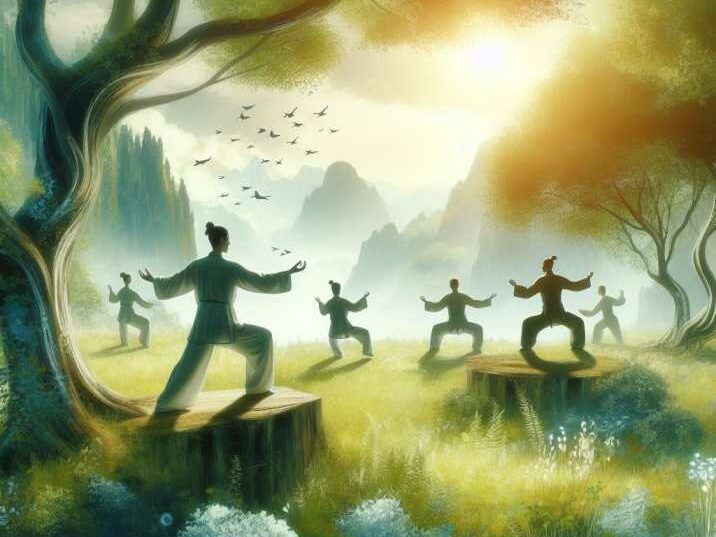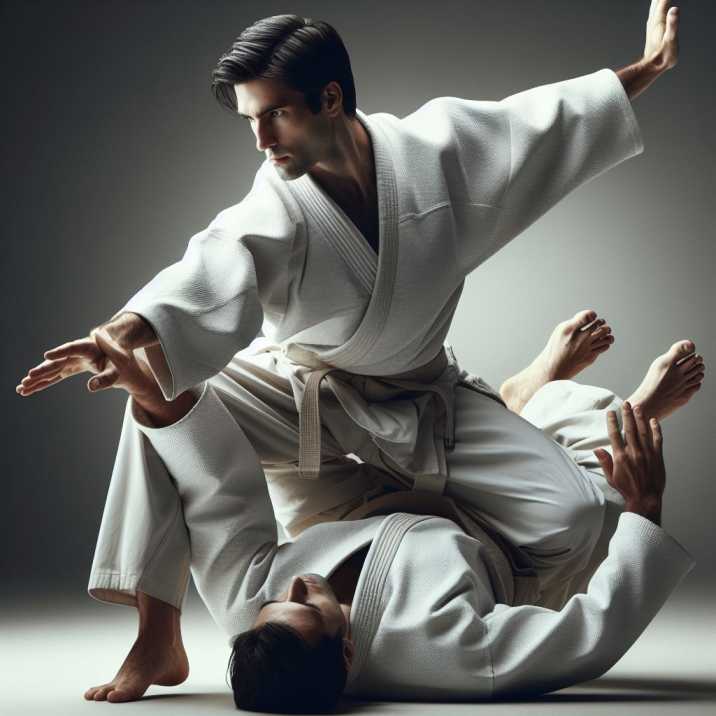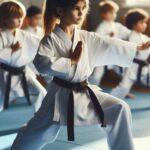Introduction:
Table of Contents
Welcome to the world of non-violent martial arts! In this comprehensive guide, we’ll delve into the essence of non-violent martial arts, exploring their philosophy, techniques, benefits, and more. Whether you’re a seasoned martial artist or a curious beginner, this article will provide valuable insights into this fascinating aspect of self-defense and personal development.

What is a Non-Violent Martial Art?
Non-violent martial arts, also known as soft or internal martial arts, are disciplines that prioritize harmony, control, and self-improvement over aggression and conflict. Unlike traditional martial arts focused solely on combat and self-defense, non-violent martial arts emphasize principles such as balance, relaxation, and redirection of force. These arts aim to resolve conflicts peacefully and promote personal growth, both physically and mentally.
Philosophy of Non-Violent Martial Arts:
Non-violent martial arts are deeply rooted in Eastern philosophy, drawing inspiration from Taoism, Buddhism, and Confucianism. Central to their philosophy is the concept of harmony – harmony within oneself, with others, and with the surrounding environment. Unlike aggressive martial arts styles that prioritize dominance and victory, non-violent martial arts teach practitioners to cultivate inner peace, empathy, and compassion.
History and Origins:
Explore the historical roots and development of non-violent martial arts, tracing their origins to ancient China and Japan. Discuss key figures and influencers who shaped these disciplines over the centuries, such as Morihei Ueshiba, the founder of Aikido, and Zhang Sanfeng, legendary creator of Tai Chi. Highlight how these arts evolved as a response to the prevalent violence of their time, emphasizing harmony and self-cultivation as antidotes to conflict.
Techniques and Principles:
Non-violent martial arts encompass a wide range of techniques and principles designed to neutralize aggression without resorting to violence. These techniques often involve circular movements, flowing transitions, and minimal physical force. Examples include Aikido, Tai Chi, and Qigong, each with its unique set of movements and applications. Practitioners learn to use the opponent’s energy against them, redirecting force and maintaining control without causing harm.

Benefits of Practicing Non-Violent Martial Arts:
The benefits of practicing non-violent martial arts extend beyond physical fitness and self-defense. These arts promote holistic well-being, improving flexibility, balance, and coordination while reducing stress and anxiety. Moreover, they foster mental clarity, emotional resilience, and mindfulness, enhancing overall quality of life. Research suggests that regular practice of non-violent martial arts can have profound effects on physical and mental health, contributing to longevity and vitality.
Applications in Daily Life:
Non-violent martial arts are not limited to the dojo or training hall; their principles can be applied to various aspects of daily life. Whether dealing with conflict at work, navigating challenging relationships, or managing stress, practitioners can draw upon the principles of non-violent martial arts to maintain composure, resolve conflicts peacefully, and promote harmony in their interactions. By cultivating awareness, empathy, and self-control, individuals can become more effective communicators and compassionate human beings.
Misconceptions and Realities:
Despite their name, non-violent martial arts are often misunderstood as passive or ineffective forms of self-defense. However, this misconception overlooks the subtle power and effectiveness of these arts. While non-violent martial arts prioritize non-aggression, they are by no means passive. Instead, they empower practitioners to respond skillfully to aggression, defusing conflict and protecting themselves and others without resorting to violence. Moreover, non-violent martial arts require dedication, discipline, and practice, just like any other martial art, yielding tangible results over time.
Modern Applications and Adaptations:
Discuss how non-violent martial arts have evolved and adapted to modern contexts, beyond traditional dojo settings. Explore their applications in healthcare, rehabilitation, and stress management, with many hospitals and wellness centers offering classes in Tai Chi and Qigong for patients recovering from illness or injury. Additionally, examine how non-violent martial arts have influenced other fields such as dance, therapy, and mindfulness practices, reflecting their universal appeal and relevance in today’s society.
Cultural Significance and Global Influence:
Examine the cultural significance of non-violent martial arts and their impact on global culture and society. Discuss how these arts have transcended geographical and cultural boundaries, gaining popularity worldwide and fostering cross-cultural exchange and understanding. Highlight events such as the World Tai Chi Day, where people from different countries gather to practice Tai Chi together, celebrating unity and peace through movement.
The Role of Meditation and Breathwork:
Explore the role of meditation and breathwork in non-violent martial arts, emphasizing their importance in cultivating mindfulness, relaxation, and inner strength. Discuss how practices such as Zhan Zhuang (standing meditation) and Dao Yin (guided breathing exercises) complement physical techniques, helping practitioners develop a deeper connection between mind, body, and spirit. Share practical tips and exercises for integrating meditation and breathwork into daily practice for enhanced well-being.
Ethical and Moral Foundations:
Delve into the ethical and moral foundations of non-violent martial arts, highlighting principles such as respect, humility, and non-aggression. Discuss how these values are incorporated into training and interactions within the martial arts community, fostering a culture of mutual respect and camaraderie. Explore the concept of martial ethics (Budo) in Japanese martial arts and its emphasis on personal integrity, social responsibility, and ethical conduct both on and off the mat.
Table of information:
| Aspect | Description |
|---|---|
| Philosophy | Rooted in Eastern philosophy, emphasizing harmony, balance, and non-aggression. |
| Techniques | Focus on circular movements, flowing transitions, and redirection of force to neutralize aggression. Examples include Aikido, Tai Chi, and Qigong. |
| Benefits | Enhances physical fitness, flexibility, and coordination. Promotes mental clarity, emotional resilience, and stress reduction. Can contribute to longevity and vitality. |
| Applications | Applicable in daily life for conflict resolution, stress management, and promoting harmony in relationships. Principles can be integrated into work, social interactions, and personal growth. |
| Misconceptions and Realities | Often misunderstood as passive or ineffective. Empowers practitioners to respond skillfully to aggression without resorting to violence. Requires dedication, discipline, and practice for tangible results. |
| History and Origins | Originated in ancient China and Japan, evolving as a response to prevalent violence. Shaped by key figures such as Morihei Ueshiba and Zhang Sanfeng. |
| Modern Applications | Adapted to modern contexts, including healthcare, rehabilitation, and stress management. Influenced fields such as dance, therapy, and mindfulness practices. |
| Cultural Significance | Transcends cultural boundaries, gaining popularity worldwide. Fosters cross-cultural exchange and understanding. Celebrated through events like World Tai Chi Day. |
| Role of Meditation | Integral to practice, promoting mindfulness, relaxation, and inner strength. Includes practices such as Zhan Zhuang and Dao Yin. |
| Ethical and Moral Foundations | Emphasizes values such as respect, humility, and non-aggression. Cultivates personal integrity, social responsibility, and ethical conduct. |
Conclusion:
In conclusion, non-violent martial arts offer a holistic approach to self-defense, personal growth, and harmony. By embracing principles of balance, control, and empathy, practitioners can cultivate physical fitness, mental clarity, and emotional resilience. Whether you’re seeking self-defense skills, stress relief, or inner peace, non-violent martial arts provide a path to holistic well-being and personal transformation. So why not embark on this journey of self-discovery and empowerment today?
Frequently Asked Questions:
- Q: Are non-violent martial arts effective for self-defense? A: Yes, non-violent martial arts emphasize techniques that enable practitioners to neutralize aggression and protect themselves without resorting to violence.
- Q: Can anyone practice non-violent martial arts, regardless of age or fitness level? A: Absolutely! Non-violent martial arts are accessible to people of all ages and fitness levels, offering gentle yet effective practices for physical and mental well-being.
- Q: How do non-violent martial arts promote mindfulness and emotional resilience? A: Through mindful movement, breath awareness, and relaxation techniques, non-violent martial arts cultivate mental clarity, emotional balance, and resilience in the face of challenges.
- Q: What are some practical tips for beginners interested in exploring non-violent martial arts? A: Start with gentle practices such as Tai Chi or Qigong, find a qualified instructor or class, and approach training with an open mind and patience.
- Q: Can non-violent martial arts be integrated into other aspects of life, such as work or relationships? A: Absolutely! The principles of non-violent martial arts, such as empathy, awareness, and conflict resolution, can be applied to various aspects of daily life to promote harmony and well-being.


